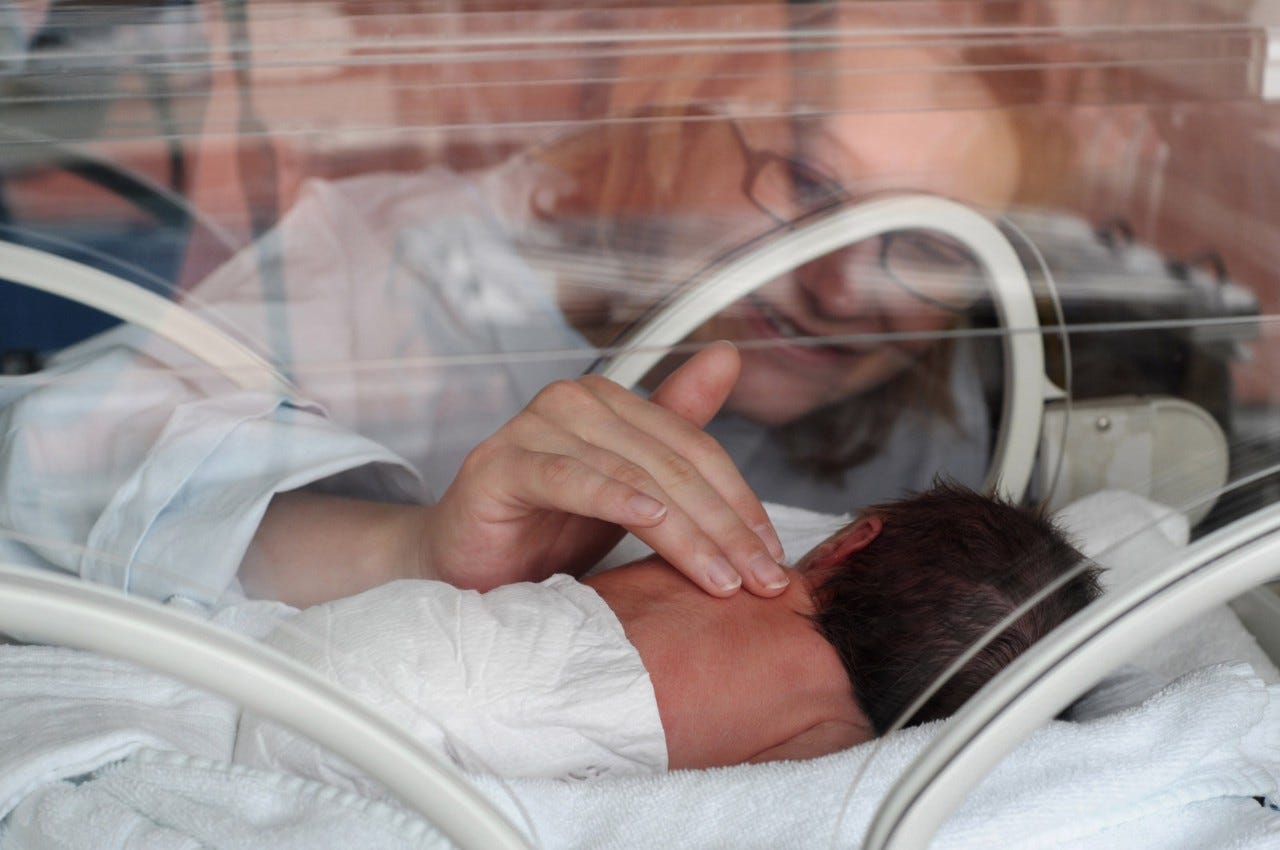Waters breaking: not long to go now!
Your waters breaking is often a sign that the birth is imminent. Now it's time to get ready for the delivery!

For a long time, babies are happy gently rocking in the amniotic sac. Towards the end of pregnancy, babies swim in an average of 800 ml of the fluid and drink around 400 ml of it a day – and excrete some of it back out into the amniotic fluid as their kidneys develop. However, as the placenta takes most of the waste products away, the foetus’ urine is not very concentrated.
When your waters break at the end of pregnancy, this is a sign that the birth is imminent, with contractions beginning in the next few hours if they’ve not started already. The amniotic fluid is not always released all at once. Sometimes it just drips out.
The waters breaking triggers a whole series of actions in the body: Among other things, prostaglandins, special birth hormones, are produced. These trigger contractions and cause the cervix to dilate. Now it won't be long before your baby sees the light of day. With our pre-birth checklist, you have already clarified all the important formalities and can fully prepare for this special moment.
Your waters have broken? Contact the hospital or your midwife!
If you start losing amniotic fluid, you should contact your midwife or the hospital, because once your waters have broken, the birth shouldn’t be far off. Amniotic fluid is at body temperature and very rich in nutrients, so it’s perfect breeding ground for bacteria. If the rupture of the membranes occurs without contractions, the birth is therefore induced after 24 hours at the latest if the expectant mother is at least 34 weeks pregnant. week of pregnancy.
If the amniotic sac doesn’t burst even though your contractions have started, the midwife sometimes opens it artificially, for example if the birth isn’t progressing. This is done with a small hook attached to a finger cot. So, bursting the amniotic sac is far less dramatic than the term suggests. The little prick doesn’t hurt, but your contractions will get stronger afterwards. This helps the birth progress.
Premature rupture of the membranes during pregnancy
Premature rupture of membranes is when the amniotic sac tears long before your due date. week of pregnancy, tears. This affects one in five women. It can be caused by a vaginal infection, too much amniotic fluid or multiple babies. In this case, the expectant mother usually has to go to hospital in order to minimise the risk of infection through treatment with antibiotics and also to keep a close eye on mum and baby and to delay the birth with contraction-inhibiting medication. If there is a lack of amniotic fluid early on in pregnancy, the unborn child may not be able to grow well, malformations may occur in the bones or the baby's lungs may not develop properly.
Amniotic fluid or urine?
Is the leaking fluid amniotic fluid or urine? You can only recognize amniotic fluid with absolute certainty if it comes out in a gush. Compared to urine, it is also colorless and smells rather sweet.
Even if you only lose a little fluid, you should still get checked by a doctor. An ultrasound is used to determine the remaining amount of amniotic fluid and calculate the pH value. The best way to test the amniotic fluid is to wear a sanitary towel or thick panty liner.
If the amniotic sac bursts but the baby’s head isn’t yet positioned correctly in the pelvis, the mum-to-be should be transported to hospital lying down.
Did you know that babies are sometimes delivered in an intact amniotic sac? This is known as the birth caul.


